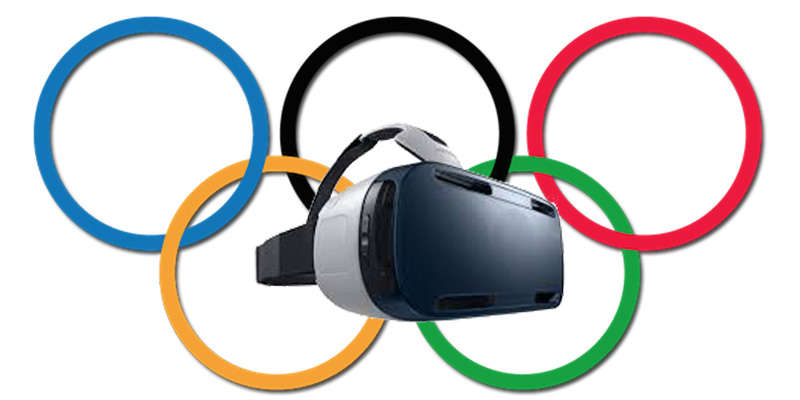 A lot more people have asked about VR over the last couple of weeks, mentioning they “heard something about it” on the Olympic coverage but didn’t know exactly how it had been used.
A lot more people have asked about VR over the last couple of weeks, mentioning they “heard something about it” on the Olympic coverage but didn’t know exactly how it had been used.
Because fewer than 10 million people have purchased VR headsets, awareness of the technology and its programming is limited. So I’m going to use a page or two here to help you understand what the Olympics did with VR headsets and, more importantly, what it didn’t do.
The basics.
Who was Involved:
NBC Sports created its own Olympic VR app and worked with Intel and Olympic Broadcasting Services (which produces video of the Olympic games) to stream live event coverage to a range of VR headsets. It’s the second time NBC has included 360 video in its Olympic coverage but the first time they streamed live events.
What hardware was Included:
Samsung Gear VR, Google Daydream, and Windows Mixed Reality headsets.
Coverage:
NBC offered 50 hours of 360 video coverage during the 2-week event. And because stats mean nothing without relative stats against them, consider that NBC broadcasted 2,400 hours of 2D (television/computer) screen coverage of the games (the most ever). Among the events streamed in VR headsets were curling, snowboarding, bobsledding, and ski-jumping.
Did you have to pay:
Yes and no. Downloading the NBC Olympics VR app was free. Then you needed to enter your cable provider and password.
What did it look like:
Compared to high definition on a 2D screen, the 360 video in VR was grainy. Some events were offered in 180 (basically meaning you watched a 2D screen inside the Virtual space).
What content was the best:
The Opening Ceremony in VR was pretty cool (it’s such a dynamic event with a portion of the show emerging from the stands and a variety of lights and colors). Getting the chance to view the ceremony in VR did provide the feeling of being there. You got to look all around the stadium, hear the moving crowd, see the energized environment, and focus on whichever portions of the show interested you most.
What needs to improve:
The quality of 360 video. Compared to the HD quality of your 2D TV or computer screen, 360 video falls well short. Additionally, it’s crucial to realize that the Olympic content was marketed as “The Olympics in VR” but it was actually “The Olympics in 360 Video” - inside a VR headset.
The Difference Between VR and 360 Video:
What makes VR such an incredible technology is the interactivity it provides. For the first time, humans are able to interact with (actually reach out to touch, move, and have an influence on) the digitally immersive world surrounding them. This foundational element is what’s garnered massive investments from Facebook, Microsoft, Google, Samsung and others. “The Olympics in VR” included none of this impact - excluding interactivity among users inside the digital world and interactivity with the digital world itself.
Bottom Line:
The reason “The Olympics in VR” was actually “The Olympics in 360” is two fold. 1) The type of headset that’s capable of supporting 360 video is more affordable than the full VR rigs (and, thus, far more prevalent in the US, and 2) Creating truly interactive and high quality VR content to cover an event like the Olympics would be far too costly and require far too many resources to generate an ROI (again, considering how few people own the hardware and thus how few people would have the capability to interact with the content).
Wrapt it up:
Credit to NBC (and the others who were part of it) for getting out there and experimenting with the new technology. But if you missed out on the 360 coverage this year...you’re probably just as well off checking back in with the coverage in the summer of 2020 in Tokyo.
Upvoted ☝ Have a great day!
Downvoting a post can decrease pending rewards and make it less visible. Common reasons:
Submit